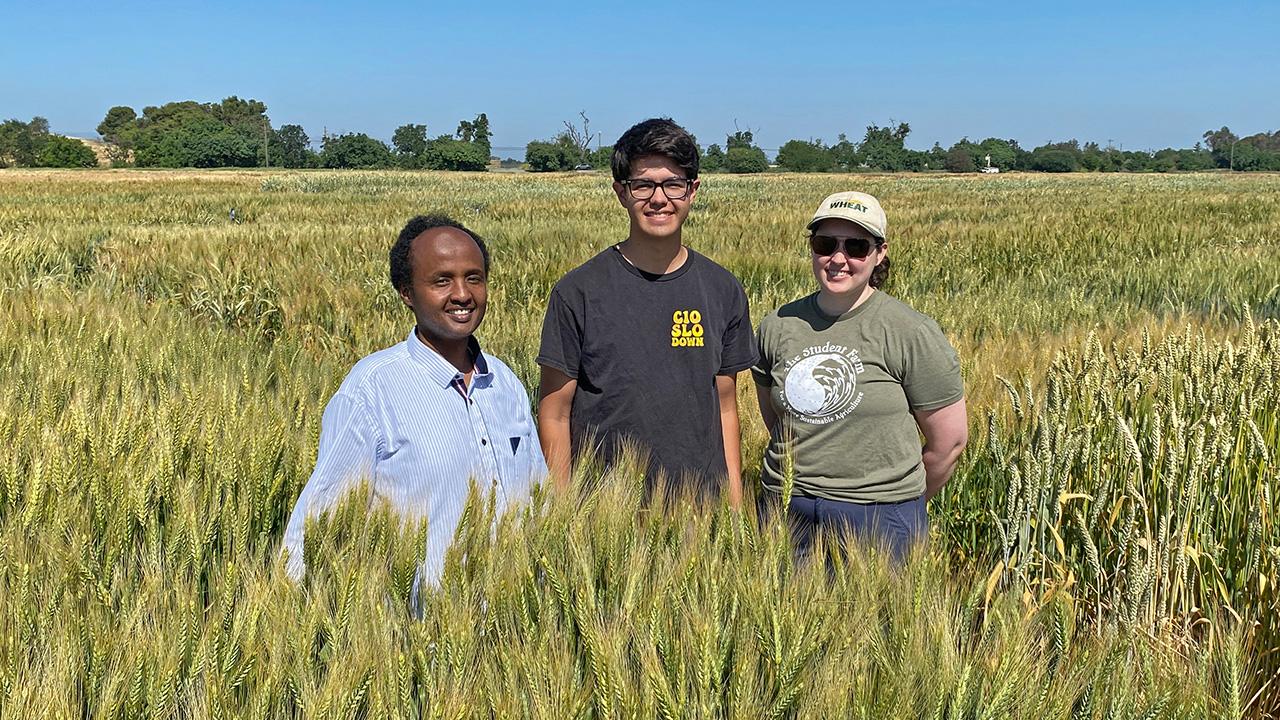
New organic wheat varieties coming from SCOPE
New lines of oats coming for milk market
Quick Summary
- More research on barley, alfalfa described during Small Grains/Alfalfa Field Day
- For growing wheat under deficit irrigation, success lies in the timing
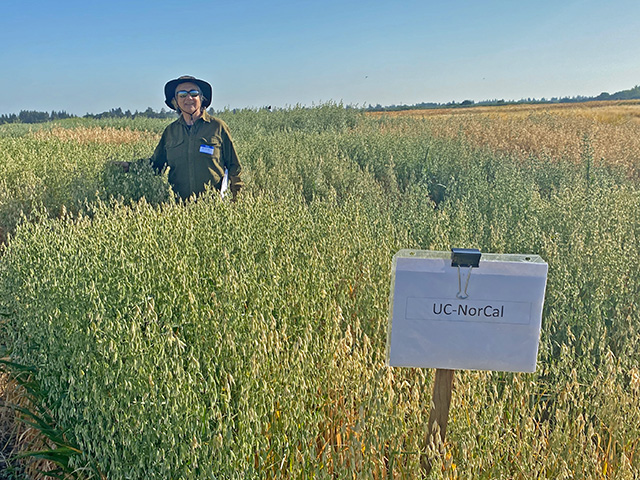
New varieties of organic wheat and conventional oats were described at the recent Small Grains/Alfalfa Field Day, hosted by the Department of Plant Sciences. In addition, researchers described work to develop new varieties of barley that can be used as both food and forage – an important focus for the UC Davis Small Grains Breeding Program.
Plus, scientists described research to test winter cereals under different management conditions. Hint: Success lies in the timing.
Staff researcher Laura Roser is the new coordinator for the wheat-development efforts at the Student Collaborative Organic Plant Breeding Education program. Roser and team are working with heritage varieties to produce new lines with good bread-making traits, different colors (including blue, purple and charcoal) and no awns, all for organic production. Awns are the thin spikes that grow naturally from the ends of the seed pods. Livestock don't like to eat them, which makes awnless varieties ideal for dual-use grains.
Roser encouraged growers interested in trying them out.
“We are getting close to having varieties ready to release,” Roser said. “We’ll have some seed available for planting, if you want to try it out,” she added.
Oats for milk and rice rotation
Project Scientist Alicia del Blanco described trials to develop new varieties of oats.
UC-NorCal and UC-Ceres are two new releases of dual-purpose oats. In particular, del Blanco and team are using UC-Ceres, a light-colored variety, to create lines suitable for producing oat milk, she said. The market for oat milk is growing and expected to be worth more than $6 billion by 2032, according to the analysis firm Custom Market Insights.
In addition, UC-Ceres is an early flowering variety similar to an older variety, the popular Montezuma, which makes it a good option for using in rotation with rice. “Growers want anything early,” del Blanco said. “Oat pathogens are not the same as rice, or other cereals,” so planting oats cuts short the extension of those pathogens in rice fields.
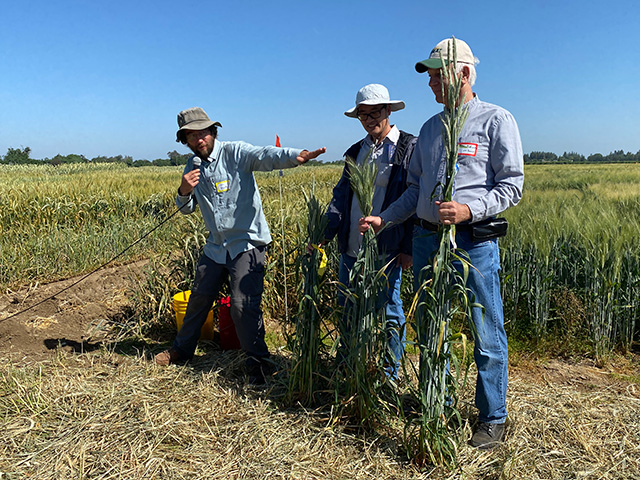
Barley for malting, food and forage
In malting barley, there are four UCD varieties in the market: UC Tahoe, Butta 12, UC-Capay and UC-Alameda. They’re all non-glycoside producers, a trait highly desired by distillers. In the pipeline are several promising lines, including some that received a satisfactory rating by the American Malting Barley Association during pilot scale malting, del Blanco said.
Project scientist Josh Hegarty described efforts to breed two new varieties of food-grade barley. He is seeing some shattering in field trials and is seeking varieties shorter in stature. Read more about this innovative breeding effort here.
He’s also working on six-row varieties as part of the breeding program’s focus on developing dual-purpose grains.
Early trials: Timing for winter cereals with little water
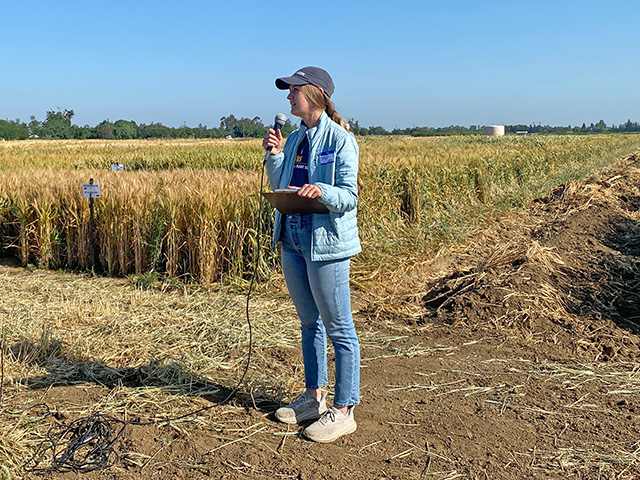
Master’s student Maya Shydlowski described trials testing winter grain crops in areas of the San Joaquin Valley with limited water. A previous model indicated that just four to eight inches of irrigation immediately after planting is enough to harvest a forage or grain crop with moderate returns.
Shydlowski and her advisor, Mark Lundy, are now looking at how productivity differs among a range of winter cereal crops and varieties under different management strategies and water availabilities. They are specifically looking at early versus late planting dates and deficit irrigation versus rainfed conditions.
The trials also are testing for both forage and grain production, reflecting the needs of California growers facing a hotter, drier climate.
In the first year of trials, they have found:
- Purely rainfed crops have little chance of success in most locations. However, planting later in the fall or into early winter improves the odds.
- Early planting benefits forage yields more than grain yields.
- For growers planting for forage and taking a deficit-irrigation approach, plant early and harvest at the plants’ soft-dough stage to get the best use of water.
- Triticale tends to have higher yields than wheat and barley under deficit irrigation, but it’s more important to select the right variety than the crop type.
Lundy is an associate professor of Cooperative Extension based in the department. Shydlowski also is working with Hegarty on the trials.
An estimated 800,000 acres of small grains are planted in California, about half of that in wheat, according to the University of California Small Grains Research and Information Center.
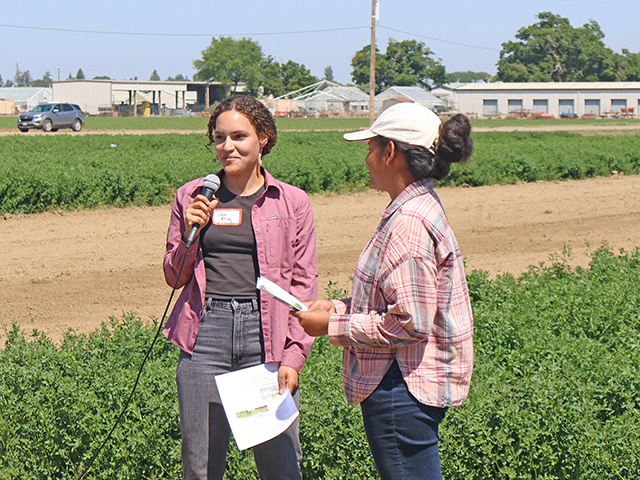
Advances in alfalfa
Research is moving apace under the direction of Professor Charlie Brummer.
- Graduate student Charles Janssen discussed his work evaluating alfalfa varieties for production under deficit irrigation.
- Graduate student Cree King described her work breeding nondormant alfalfa with creeping roots.
- Graduate student Michele Nalle explained her efforts to develop new seed pools for improved varieties of alfalfa.
Related links
Read more about the new focus of the UC Davis Small Grains Breeding Program, described by new director Xiaofei Zhang, here.
Read more about alfalfa being developed to thrive amid weather variability here.
Read about research to develop wheat that reduces allergic reactions, including in people with celiac disease, here.
Read about the development of grains with semi-dwarfing characteristics here.
More research is described by the UC Small Grains Research and Information Center, here.
